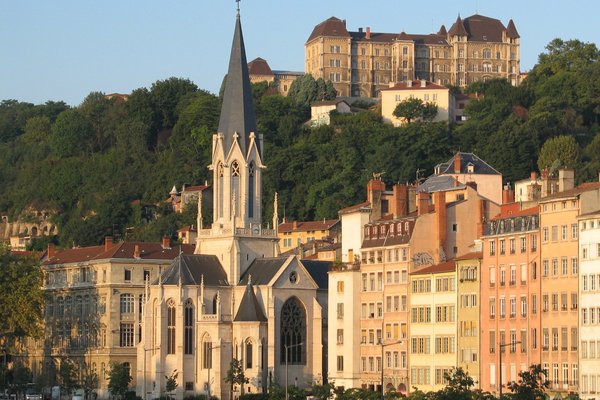France
Lyon
The Historic Site of Lyon, a flourishing trading city since Roman times, has preserved its architecture and urban planning over many centuries.
Lyon owes its continuous prosperity to its strategic location at the confluence of the Rhône and Saône rivers. The city was known especially for the silk trade, but it also held important financial institutions and an early printing industry. Over time, its urban plan expanded but without destroying earlier areas or buildings.
Community Perspective: A lovely city that gives a great impression of French culture (it has great restaurants too!), so a perfect destination for a weekend trip. Instead of great monumental buildings, the highlight here is the urban plan itself with the traboules, the secret passageways, as particularly characteristic.
Site Info
Official Information
- Full Name
- Historic Site of Lyon (ID: 872)
- Country
- France
- Status
-
Inscribed 1998
Site history
History of Lyon
- 1998: Inscribed
- Inscribed
- Type
- Cultural
- Criteria
- ii
- iv
Links
- UNESCO
- whc.unesco.org
- Official
-
- patrimoine-lyon.org — Patrimoine Lyon
- Related
-
- en.lyon-france.com — Lyon tourism
All Links
UNESCO.org
- whc.unesco.org — whc.unesco.org/
Official Website
- patrimoine-lyon.org — Patrimoine Lyon
Related Resources
- en.lyon-france.com — Lyon tourism
Community Information
- Community Category
- Urban landscape: Urban continuity
Travel Information
Recent Connections
-
Asterix
As Lugdunum in Le Tour de Gaule d'Astér…
-
Perfect Inscriptions
1998 -
Alexandre Dumas
In his work "Nouvelles impressions de v…
Connections of Lyon
- Individual People
-
-
Jean-Michel Jarre
In 1986, in honour of the papal visit of Jean Paul II, Jarre organises "Rendez-Vous Lyon : concert pour le Pape", a free concert on the Fourvière Hill, which attract 800,000 spectators. (Wikipedia) -
Alexandre Dumas
In his work "Nouvelles impressions de voyage: le Midi de la France", Dumas recounts his visits to Fontainebleau, Lyon, Orange and its Roman vestiges, Avignon, the Pont du Gard and Arles.
-
- Geography
- Trivia
-
-
Depicted in Mizielinska Maps
Notre-Dame de Fourvi?reSee i.pinimg.com
-
Tour de France
Tour de France 2020, Stage 14
-
- History
-
-
Ancient Roman colonies
Lugdunum -
Assassinations
President of France Sadi Carnot outside the Palais de la Bourse 24 Jun 1894See en.wikipedia.org
-
Sieges and Battles
Besieged during the French Revolution. Aug/Sept 1783 at the order of the committee of Public Safety for counter revolutionary activities. French Republican forces laid siege and captured the city and followed up with its partial destruction and execution of many of its citizens.See chnm.gmu.edu
-
Second World War
During World War II, Lyon was a centre for the occupying Nazi forces, including Klaus Barbie, who was called the "Butcher of Lyon" for having personally tortured prisoners of the Gestapo, some of them at his headquarters at the Hôtel Terminus . However, the city was also a stronghold of the French Resistance. The many secret passages known as traboules, enabled people to escape Gestapo raids. The famous French resistance hero Jean Moulin was tortured in the Gestapo headquarters in Lyon.See en.wikipedia.org
-
Holy Roman Empire
In 843 it was assigned to Lotharingia by the Treaty of Verdun, and then passed to the Burgundian kingdom. It became the centre of the County of Lyon, the lordship of which was conferred by the Holy Roman Emperor Frederick Barbarossa to the Archbishop of Lyon in 1157. (wiki)
-
- Architecture
-
-
Iron Structures
Tour métallique de FourvièreSee en.wikipedia.org
-
Mosaic art
Inside Fouvri?re Basilica -
Urban fabric
-
Mannerism
Mannerist house of the Lion (1647) -
Designed by Jules Hardouin-Mansart
Hotel de la Ville
-
- Damaged
-
-
Terrorist Attacks
On 5 August 1980, two Armenian gunmen stormed the Turkish Consulate General in Lyon. When the doorman did not understand the gunmen's broken French, the gunmen killed him. The Armenian gunmen stormed the tourism waiting lounge, opening fire and killing one and wounding eleven French visitors. The Armenian Secret Army for the Liberation of Armenia (ASALA) claimed responsibility for the attackSee en.wikipedia.org
-
- World Heritage Process
-
-
Perfect Inscriptions
1998
-
- Religion and Belief
-
-
Votive churches
Notre-Dame de Fourvière: dedicated to the Virgin Mary, to whom is attributed the salvation of the city of Lyon from the bubonic plague that swept Europe in 1643 (wiki) -
Cathedrals
Cat St Jean Baptiste
-
- Human Activity
-
-
Historical Financial Institutions
Crédit Lyonnais is found in Lyon in 1863 (Known as Le Crédit Lyonnais since 2003) -
Textiles
Musée des Tissus (Museum of Textiles - 1864)See en.wikipedia.org
-
Silk Manufacture
Lyonais silk workshops, the canuts in Croix-Rousse -
Grand Tour
-
Tramways
-
- Constructions
-
-
Theatres and Opera Houses
Two Roman theatres -
Astronomical clocks
The Lyon astronomical clock in Lyon Cathedral was constructed in 1661, replacing a 14th-century original. It has an astrolabe dial and a calendar dial. (wiki) -
Equestrian Statues
Statue of Louis XIV in Place Bellecour. Originally created in 1713 it was melted down for cannon in the French Revolution! A second (different) statue was installed in 1825 -
Roman amphitheatres
Roman amphitheatre -
Funiculars
Two operational ones: (1) opened in 1878 linking Saint-Jean to Saint-Just with an intermediate station at Minimes, climbing the Fourvière hill; (2) opened in 1900, linking the Tour Metallique on Fourvière hill to Saint-Paul and the Basilica on Fourvière with Saint-Jean.See en.wikipedia.org
-
Monumental Fountains
Bartholdi Fountain in the Place des Terreaux -
Large squares
Place Bellecour, 62000 m2 -
Aqueduct
-
- WHS on Other Lists
-
-
European Route of Historic Theatres
French RouteSee www.erht.eu
-
- Timeline
-
-
Built in the 16th century
For its evolving town planning over the centuries: "Over-population and the risk of epidemics led to the implementation of a policy of planned expansion starting in the mid 16th century" (AB ev) -
Built in the 1st century BC
As a "major Roman foundation" (43 BC)
-
- WHS Hotspots
- Science and Technology
- Literature & Film
-
-
Asterix
As Lugdunum in Le Tour de Gaule d'Astérix
-
News
No news.
Recent Visitors
Visitors of Lyon
- Adrian Turtschi
- Aitia
- Alberto Rodriguez Gutierrez
- Alexander Barabanov
- Alexander Lehmann
- Alex Baranda
- alicemears
- A. Mehmet Haksever
- Ammon Watkins
- AmyAbroad
- Ana Lozano
- Anna Wludarska
- Ansitong
- Argo
- ArnaudFilloux
- Artur Anuszewski
- Aspasia
- Atila Ege
- Aunti
- aurore25
- AYB
- Bauchat
- BaziFettehenne
- Bill Maurmann
- Bin
- BJGreasly
- BMuramatsu
- Boj
- bossc
- Bram de Bruin
- Brendan Carroll
- butterflybird
- CampbellME
- campmany
- Can SARICA
- Carlos Sotelo
- Caspar
- cflw
- chenboada
- chenqtao
- Cheryl
- CherylKla
- chiuliqi
- Christer Sundberg
- Christian Wagner
- Christine
- christof
- Christravelblog
- Chunsian01
- Cirene Moraes
- Cluckily
- Clyde
- Cristina Erba
- Csaba Nováczky
- ctravel
- CugelVance
- cwthong
- Cyberczar
- CynthiaW
- czesioszpachelka
- Dagmara
- Damientournay
- Dani Cyr
- Daniela Hohmann
- Daniel Chazad
- Daniel Gabi
- Danieljbromberg
- Daniel R-F
- Danny L
- Dan Pettigrew
- David Berlanda
- Delphine Delaunay
- Dimitar Krastev
- Dimitrios Polychronopoulos
- Dirk-pieter
- Dolemite92
- Dorejd
- Dwight Zehuan Xiao
- Echwel
- Elf21
- Elia Vettorato
- eljx1988
- Ellen Nielsen
- Els Slots
- Emili Xaus
- Erfe91
- Erik G
- Erik Jelinek
- Eva Kisgyorgy
- fabi-ddorf
- Fan Yibo
- Farinelli
- Feldhase
- Filip Murlak
- Flexiear
- Francky D'Hoop
- Frederik Dawson
- g.emma_bae
- George Gdanski
- GeorgeIng61
- GerhardM
- Gernot
- Gilles
- giloudepuertorico
- Gjert
- Glenn Nightingale
- grimloch
- Grzegorz Andruszkiewicz
- Hadrianus
- HaraldOest
- Harald T.
- Harry Mitsidis
- Hasco
- H Beswick
- Hdhuntphotography
- headventure
- hegeline@icloud.com
- Highlander
- Hubert
- Hurrvinek
- Iain Jackson
- Ian Cade
- ih0000
- Ingemar Eriksson
- Ivan Rucek
- Jakob F.
- Jana and Matt
- janem
- Janina Lehmann
- Janos
- Jarek Pokrzywnicki
- Jarrod_Byham
- Jasam
- Javier Coro
- Jean Lecaillon
- Jeanne OGrady
- Jeffrey Chai
- Jens
- jess4sythe
- Jezza
- Joel on the Road
- Johan
- John Smaranda
- Jonas Hagung
- Jonas Kremer
- Jonas Martinsson
- jonathanfr
- JoStof
- Joyce van Soest
- JR's HERITAGE SITES
- Just_hatched
- KarenBMoore
- Karito Vies
- Kasper
- Kbecq
- Kedp2023
- Ken DJ
- KentishTownRocks
- Kerékgyártó
- Kevin247
- kiank37
- Kim, Soo-youn
- Knut
- ko9757
- KoenigMarke
- Krijn
- Krzysztof B
- Laetitia Yin
- Lara Adler
- Laurine
- LaVale
- Lazerway
- Leafar98
- Li
- Liamps91
- Linz
- Lithobates
- ljowers
- Loic Pedras
- Luboang
- Lucas Del Puppo
- Lucio
- Luis Filipe Gaspar
- Lukemarshall
- Maciej Gil
- Maciej Gowin
- Malgorzata Kopczynska
- Małgosia Łupicka
- Manon R
- manuel011197
- Manuelfunk
- marcel staron
- Marinemajor
- Martin
- Martina Rúčková
- Marty
- Mateusz
- Matthewsharris
- MAURO PODDA PANI
- MaYumin
- MH
- Mia esguerra
- MichaelH
- Michael Novins
- Mikko
- Milan Jirasek
- Mohboh
- Monica Tasciotti
- MoPython
- Morodhi
- Mtlmr
- Naim Y
- nan
- Nasebaer
- natlefebvre@hotmail.
- Nicolas
- Nihal Ege
- nikolasruffet
- Nikolay Marinov
- NoahFranc
- Nuria8
- opperpco3
- Paola Laura
- Pat Martin
- Patrik
- Paul Schofield
- Peltzi
- PeterA
- PeterH
- Peter Lööv
- Petteri
- Philipp Leu
- Philipp Peterer
- phillipmeng
- Pierre T
- Pieter Dijkshoorn
- pietprive06@kpnmail.nl
- Pincze
- Piotr Wasil
- pontobaggins
- pressdm
- puessergio
- Purrfect
- Randi Thomsen
- Reisedachs
- Reza
- Rick Ohm
- RobRos
- Rob Wilson
- Rodinia
- Roel Sterken
- Roger Ourset
- Roman Bruehwiler
- Rubbie
- RyanJ
- Sabrina Liebehentschel
- Samato
- Sandmann15
- Schnitzel
- Sclowitz
- scubarrie
- Sergio Arjona
- Shandos Cleaver
- Shijie ZHU
- SirLoydd
- Slavi
- Solivagant
- Sorel Americo
- Stanislaw Warwas
- Stefan A. Michelfeit
- stephanvermeulen
- Stijn
- Sturuss
- Sutul
- Svein Elias
- Szucs Tamas
- Tamara Ratz
- Tammy Gouldstone
- Taotao Chen
- Tarquinio_Superbo
- Tcchang0825
- Ted Coombs
- Thomas Buechler
- Thomas Harold Watson
- Thomas van der Walt
- Tim Allen
- TimPick
- Tinamu
- Tingying He
- Toxicologist
- triath
- Tsunami
- Twobaconsandaboston
- ValiaVeweth
- Vanessa Buechler
- Van Hung
- viktor_balandin
- Vincent Cheung
- voyager
- WalGra
- Walter
- Waxwing
- WILLIAM RICH
- Wimmy
- Wojciech Fedoruk
- Wo_ko
- Xander Huang
- Xiquinho Silva
- Yang Chengyu
- Yevhen Ivanovych
- Yongcheng Liu
- Zach
- Zhenjun Liu
- Zoë Sheng
- ZZSong
Community Reviews
Show full reviews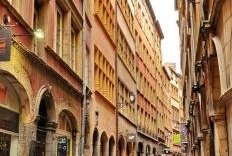
Despite many times I have been to this region, I never have thought to visit Lyon’s historic center because my friends told me that there is nothing to see in this big city; however, when my friends and I decided to stop for a night at Lyon on our trip to Andorra because one of my friend want to have Lyonnais meal at his favorite restaurant, I decided to see this World Heritage Site city. Walking around in the area near its main train station, Part Dieu, Lyon really looked boring and nothing to see. When I crossed the Rhone to the old quarter, I started to see some nice buildings but nothing really outstanding, I went to see Place des Jacobins and Place Bellecour, again nothing special. I felt disappointed and almost decided to walk back to the hotel, but I thought that at least I should walk to the Saone.
The beautiful view of Lyon along the Saone completely changed my mood, the sight of La Basilique Notre Dame de Fourvière on the green hill and the row of buildings of Vieux Lyon and La Croix-Rousse were something that made Lyon to be interesting than other French cities especially for La Croix-Rousse that I really impressed since it was really unique to see such kind of urban landscape in France, hilly and lack of organized city design. When I stepped into Vieux Lyon, it was a totally different world, full of narrow streets of Renaissance buildings, …
Keep reading 0 comments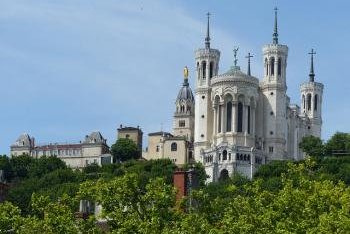
I visited this WHS in May 2015. I stayed in a lovely hotel in the Presqu'ile area which is an island of sorts between the Rhone and Saone rivers. It was a perfect base to visit all the different areas and sites of Lyon. The main landmark of Lyon and a great place to enjoy a great panoramic view of Lyon (as well as the numerous chimneys of the old city centre and Croix Rouge area) is the Fourviere Basilica easily reached by one of the world's two oldest funicular lines. The interior of the Basilica is worthwhile visiting and in the lower chapel there are beautiful mosaics of the capital vices as well as the Route of Santiago de Compostela (which I hope to embark on next year). The Fourviere hill is also the site of the original Roman Lugdunum and there is a Roman theatre and odeon with free entrance. I decided to walk down to the old city centre through the Roman theatre and odeon area. The highlight of my visit and the true OUV lies in the traboulles, the secret passageways and staircases of Lyon. I downloaded a set of maps and walking trails from www.lyontraboules.net and enjoyed getting lost in the traboulles network. Not all the doors were open all the time but I felt that this added more fun to my visit as every time I pushed the door knobs I didn't know what to expect and whether I would be able to pass …
Keep reading 0 comments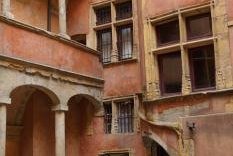
The charm of Lyon is the lively atmosphere and the varied architecture from different periods, and moreover: interesting museums and an excellent local cuisine. What else could you want for a weekend trip? In Lyon, you can find historic districts and buildings representing traces of urban settlement from 2000 years, from the Roman period to modern times. We spent four days in Lyon in June 2013, the city was our base for visiting the Le Corbousier sites in Firminy and Eveux-sur-Arbresle and the starting point for our round trip through Southern France. The WHS spreads over a wide area and comprises the quarters of Croix-Rousse, Presqu’île, Vieux Lyon, and the Fourvière hill. We started exploring the city at the Croix-Rousse hill. The multi-storey houses are from the 19th Century and were the homes and workshops of the silk workers. The apartments have been specifically created for the silk weavers: high rooms with enough space for the looms and large windows for plenty of natural light. The view from a Saône bridge nicely shows the window front of the building ensemble upwards the Croix-Rousse hill. Today it's a lively neighbourhood with some fashionable shops and design workshops, eg in the Passage Thiaffait, but in other parts also with run-down houses and shabby corners. Just around the corner of our hotel was one of the most famous 'traboules' (passageways of the silk weavers): La Cour des Voraces (place Colbert 9) with a six-floor stairway in the courtyard. It was the refuge of …
Keep reading 0 comments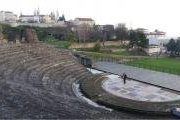
The historic centre of Lyon comprises a huge area in the city and shows the evolution of the place from the Roman time to the current days passing by the increasing presence of trade in the city expansion. One of the major places of the site are the Roman remains on Fourviere Hill and that comprise above all the Odeon, used for music, the theatre and several buildings that were composing a small town two millenniums ago. The museum located on the site is very well set up with huge collections of Roman artifacts and give a lot of explanations. While visiting this place, give a look at the centre of the Odeon. You can see a great colorful mosaic made with different minerals from several places of the world known at this time.
Relatively close from the Roman site, you will be able to admire the well-known Fourviere Cathedral, built at the end of the 19st century and unique by its shape and to enjoy one of the best views over Lyon. Taking the funicular to leave the hill, you will reach the Renaissance area and walk through the different buildings built by wealthy merchants several centuries ago. To finish with, the Presqu'île, the Peninsula over the river, is full of ancient building especially near of the Place Bellecour.
Keep reading 0 comments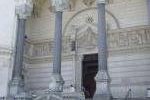
As in Strasbourg, in Lyon I bought a day ticket which covered buses, trams, funicular, trolleybus and metro all for 4.50 euros. This way I managed to visit in one day the ornate Hotel de Ville, the sites on Fourviere Hill, the cathedral, several churches, the Temple and other architectural monuments and the huge Place Bellecour. Also interesting was the Embroidery Museum on the Presq'ile.
Keep reading 0 comments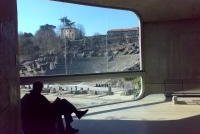
I’ve been to Lyon a couple of times but only on my last visit I had the time to go to the Fourvière hill. The view of the city from the back of the Basilica is magnificent (and the Basilica itself worth a visit even if it is only from the end of XIX century) but what I liked most was the Musèe de la Civilitation Gallo-Romaine in the complex of the Parc Archéologique de Lyon Fourvière where you can also visit for free the beautiful and well preserved Roman Theatres (Grand Théatre and Odéon). I had no idea that this museum had so many, big and wonderful mosaics! They reminded me of those in the Tunis museum, also there I was struck by these outstanding works dating from the Roman empire. You can reach the museum with a funicular railway to be taken near St. Jean Cathedral down in the Vieux Lyon (here, don’t miss to look inside the buildings), then a short walk just on the right, facing the Fourvière Basilica. I’ve also taken a look to the interesting Musée de Beaux Arts that houses one of France's richest collection of art masterpieces and been to the splendid Hotel de Ville where I had the chance to be invited to a gala dinner! Once I’ve also been to the famous Paul Bocuse’s “Abbaye of Collonges” at Collonges, 5km north outside the city of Lyon where there’s a incredible huge “carillon”. It’s a mechanical pipe organ dating 1900, whose …
Keep reading 0 comments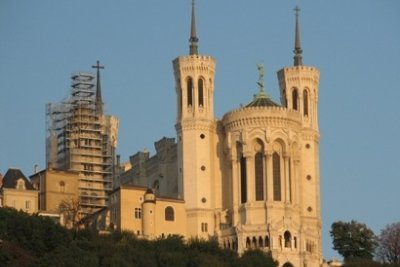
The city of Lyon has enough on offer to satisfy anyone visiting for a weekend break. It’s a very lively ànd liveable city, with plenty of attractive restaurants, terraces, squares, small parks and (four) riverside(s).
Because of the hills and the city’s size, you’ll have to pack good walking shoes as you will easily set back several kilometers.
On my first day here I explored the current city center and the Croix-Rousse hill. I immediately halted for lunch on one of the terraces at the square in front of the Hôtel de Ville. This is a great place, a bit like the market squares in Belgium. Then I walked on (and up) to the former silk workers neighbourhoods. Not a whole lot is left of that now, it’s mostly a residential area. One relatively small section still has terraced roads.
The next day, a Sunday, I got started at 8 a.m. and made my way to the other hill: Fourvière. This part of the city, on the left bank of the Saône, feels more monumental than the area I walked in yesterday. Crossing the bridge your eyes immediately turn to the landmarks Fourvière Basilica and St. Jean Abbey. To get there it’s best to take the funicular railway. The service to Fourvière is suspended for the moment, so I had to take a detour and walk from there. I passed the large Roman theatre and had a quick look. Most impressive however is the Fourvière Basilica. I …
Keep reading 0 comments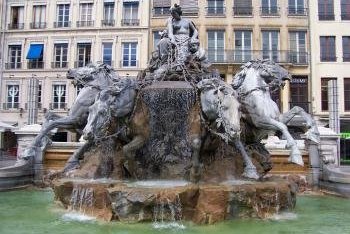
I really enjoyed Lyon. It was the first proper visit I have paid to a major French city outside Paris, and gives a great impression of French culture.
The Presqu’ile area, between the Saone and the Rhone, has broad boulevards and large public squares with some great buildings and fountains, including the very impressive fountain by Bartholdi (of Statue of Liberty fame) in front of the town hall. I also liked the printing museum in this area.
The area of Old Lyon on the bank of the Saone is great, with a very impressive Cathedral and winding streets. These are all linked by Traboules; covered passages with fantastic spiral staircases. You will have to keep your eyes peeled to see them, and to get into many you have to press a buzzer but they are great fun to explore. There is a great example at the Printing Museum.
Above this is the Fourviere area topped by basilica that can be seen from all around the city. It is comparable to Sacre Cour in Paris, however this has to be the most ludicrous place of worship I have visited. It is a double decker church. The lower tier is nice, however the top level is covered in very garish decorations, and really should not be missed. Nearby are the remains of the Roman theatres (Graeme’s photo below) I was surprised to find that these were actually free to enter and made a great place for a picnic.
The area of old …
Keep reading 0 comments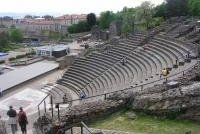
Spent a weekend visiting a friend in Lyon in May 2005 and what a lovely city! Suffering from comparisons to Paris for centuries, I think Lyon wins out in many respects. The food, while simpler, is heartier and is served in the more comfortable confines of the local 'bouchon.' The people are generally more outgoing and more tolerant of those of us who make an attempt at speaking French. And finally, the city is a wonderfully eclectic array of elements, boasting Roman amphitheatres, medieval alleyways, grand palaces, and modern accoutrements, all gloriously straddling the confluence of the rivers Saone and Rhone. This is not to say that I do not like Paris,far from it, but for those seeking a more relaxed and, in some ways, authentic introduction to French urban life, Lyon should be the city of choice.
Keep reading 0 comments
